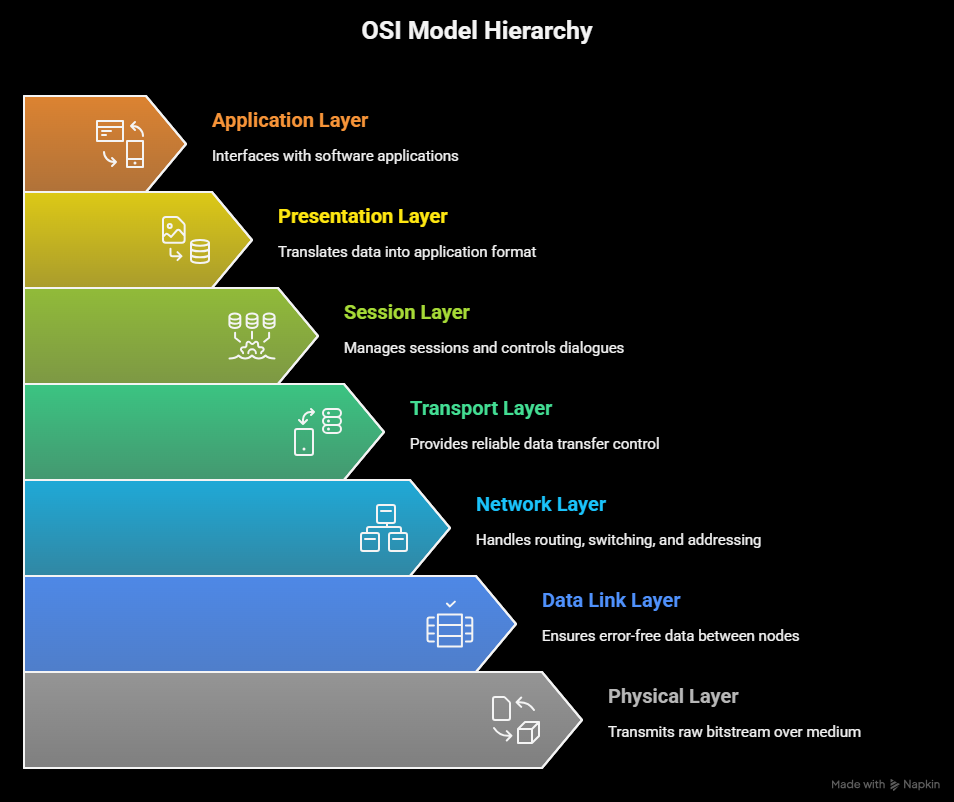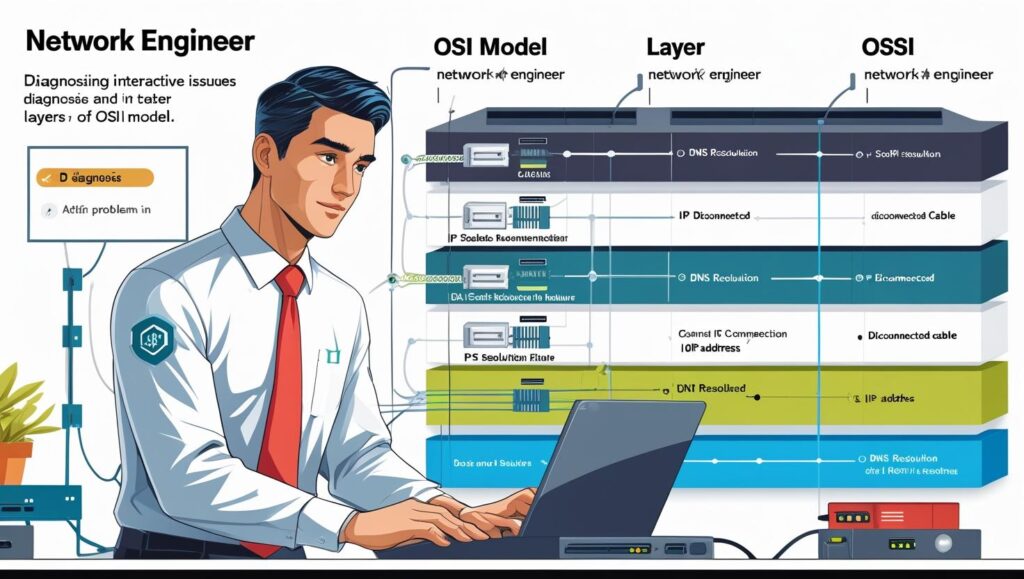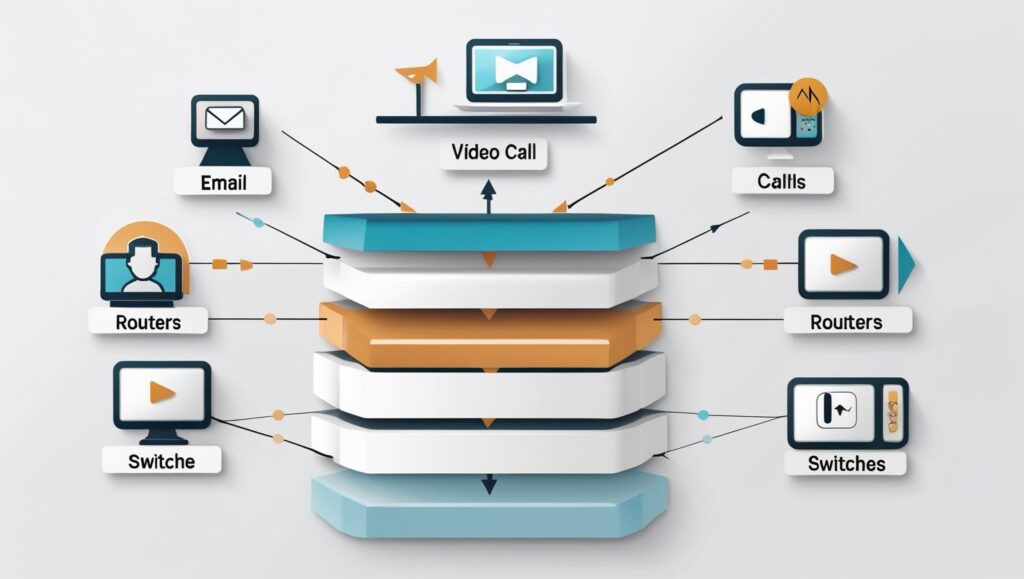In the world of computer networking, the OSI model stands as a foundational framework. Whether you’re a networking student, IT professional, or tech enthusiast, understanding the OSI model is essential for diagnosing problems, designing systems, and grasping how data moves across networks. This article provides a comprehensive explanation of the OSI model, breaking down its seven layers, functions, and real-world relevance.
What is OSI Model?

The OSI model (Open Systems Interconnection model) is a conceptual framework developed by the International Organization for Standardization (ISO). It standardizes the functions of a telecommunication or computing system into seven abstraction layers. These layers guide product developers and facilitate interoperability between different systems and software.
Why Was the OSI Model Created?

In the 1980s, different vendors created proprietary network protocols, causing communication issues. The OSI model was introduced to create a standard that all systems could follow, enabling seamless data exchange across platforms.
The Seven Layers of the OSI Model Explained
Each of the seven layers of the OSI model has a specific function and communicates with the layers directly above and below it. Here’s a breakdown:

Layer 7: Application Layer
Closest to the end user
Interfaces with software applications (e.g., browsers, email)
Protocols: HTTP, FTP, SMTP
Layer 6: Presentation Layer
Translates data into a format understandable by the application
Handles encryption and compression
Layer 5: Session Layer
Manages sessions and controls dialogues between computers
Responsible for opening, closing, and managing sessions
Layer 4: Transport Layer
Provides reliable data transfer through flow and error control
Protocols: TCP, UDP
Layer 3: Network Layer
Handles routing, switching, and addressing
Protocols: IP, ICMP
Layer 2: Data Link Layer
Ensures error-free data between two nodes
Divided into MAC and LLC sublayers
Layer 1: Physical Layer
Deals with physical connections (cables, switches)
Transmits raw bitstream over the medium
Conclusion
The OSI model is much more than just an academic concept. It’s a critical framework that simplifies the complexity of network communication. Whether you’re setting up a basic network, troubleshooting connectivity issues, or studying for IT certifications, knowing the OSI model will give you a deeper understanding of how systems talk to each other.
